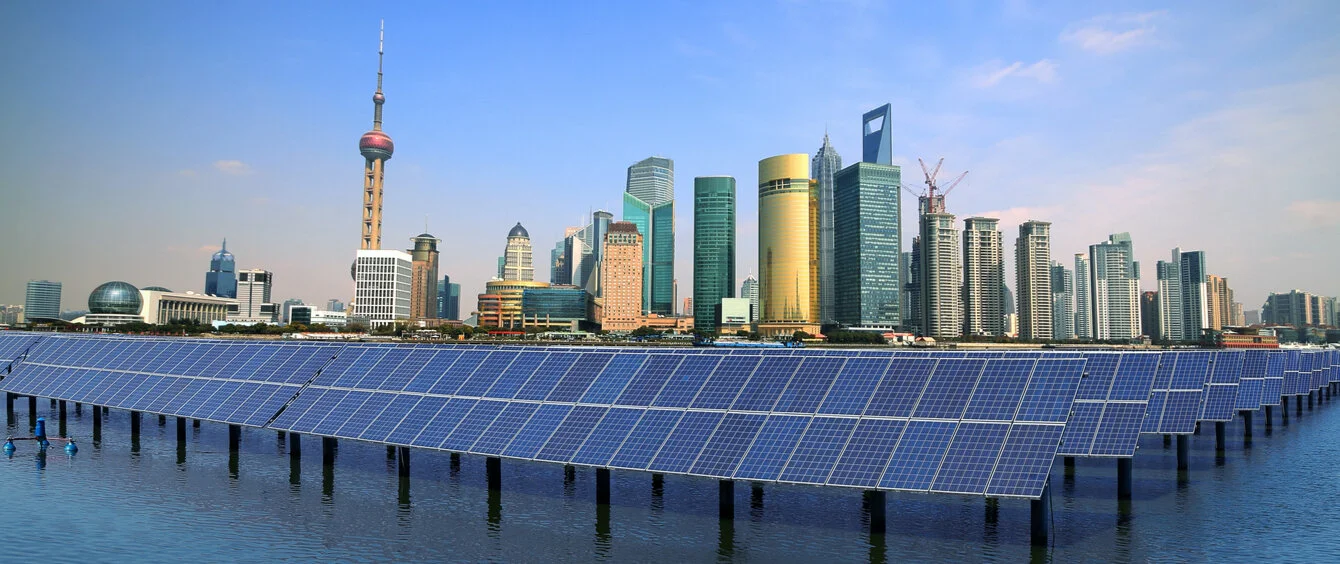In the past decades, hardly any country has experienced an economic upturn as strong as in China. At the same time, however, this economic growth has made the People’s Republic the world’s biggest emitter of greenhouse gases, responsible for releasing one-third of all manmade CO2 into the atmosphere—a trend that is still rising. Furthermore, a large number of coal power plants is being built or developed. Estimates have these stations accounting for more than half of all new such assets worldwide. This clearly demonstrates that the fight against climate change also depends crucially on developments in China.
President Xi Jinping announced back in 2020 that China aimed to be fully carbon neutral by 2060, but it remains unclear how in fact the PRC will get there. At any rate, the country made last-minute headlines at the World Climate Conference in Glasgow (COP26) when it made a commitment together with India to soften the coal phaseout to “ramping down coal.”
One approach is presented by a new report by the International Energy Agency (IEA), the authors of which explored how the 1.4 billion resident nation could possibly achieve net zero. In the roadmap it recently published on the Chinese energy sector, the Agency outlines paths to carbon neutrality in multiple scenarios. The main takeaway is that the country has already charted a good course through its substantial expansion of renewable energy. Particularly in terms of installed onshore wind and solar capacity, it tops the world standings by a huge margin. The task at hand now is to take the next steps with resolve.
Coal dominates the electricity mix
In both models, the energy sector and industry play a central role, as they combine for nearly 85 percent of all Chinese greenhouse gas emissions. This is due to the country’s strong dependence on fossil fuel, with coal leading the way: Most recently, some 60 percent of Chinese electricity was produced by coal-fired power stations.
Concurrently, however, renewable capacity is on the rise, growing at breakneck speed led by solar energy. And the consequences are already tangible. According to the authors, the energy intensity of China’s gross domestic product (GDP) has declined markedly over the last few years, signalling that the emission intensity of key sectors is already trending down.
The APS would require China to transform its energy system fundamentally, involving a huge build-out of solar as well as onshore and offshore wind. This would enable emissions to peak before 2030, after which they would drop steadily, the report claims. Solar would thus become the main energy source by 2045, followed by the coal phaseout in 2050, the entire energy sector becoming carbon neutral by 2055, and the possibility of using one-fifth of all electricity generated to produce hydrogen. This would require increased investment, which however would only account for 1.1 percent relative to the constantly growing GDP in 2060—much less than the 2.5 percent recorded from 2016 to 2020.
According to IEA experts, decarbonisation will be spurred by deploying innovative technologies such as hydrogen as well as carbon capture, usage and storage (CCUS). By contrast, the report finds that progressive electrification is pivotal to the transportation and building sectors.
Promising prerequisites
However, based on the report, China could achieve its goal even faster. Indicators to this effect include reforms such as the recent introduction of an emissions trading system. This explains why the authors have already modelled the country’s path to earlier carbon neutrality in the ATS. To accomplish this, wind and solar capacity in particular would have to be expanded more than envisaged in the APS. Moreover, the stage for faster change would have to be set before 2030 in the other sectors as well. This would require, e.g., greater expenditure on electrifying transportation and speeding up the development to maturity of technologies like hydrogen.
This would have further positive knock-on effects: Based on the expert’s calculations, it could create up to a million new jobs, giving an additional boost to China’s economy, which is already flourishing as it is. Should China succeed in hitting its carbon neutrality target, this could also demonstrate how an energy transition and economic growth can cross-pollinate each other.
